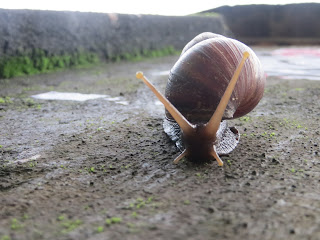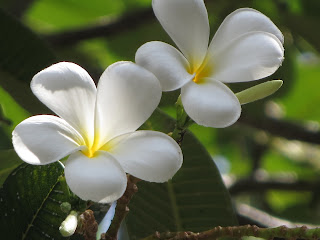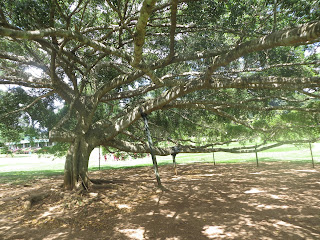Snail-Mollusca
PHYLUM MOLLUSCA
The molluscs include a number of familiar animals, including snails, oysters, clams, octopuses and squids. Many species have a calcareous shell. Molluscs are bilaterally symmetrical, although some have secondarily lost the symmetry in part; they have well-developed excretory, digestive, respiratory and circulatory systems. In all molluscs except the cephalopods, the circulatory system is open. All molluscs are characterized by having three main body regions: a head-foot, which is the sensory and locomotor part of the body; a visceral mass, containing most of the organ systems; and a mantle, which covers the visceral mass and secretes the shell, if one is present. Most molluscs also have radula, a rasping structure covered with chitinous teeth, which is used in feeding.
Molluscs are probably closest phylogenetically to the annelids. Several lines of evidence support this view. Both annelids and molluscs have very similar developmental patterns and a similar type of ciliated larva, called a trochophore larva. Unlike annelids, molluscs are not segmented, although one very primitive genus, Neopilina, shows some signs of segmentation. Although molluscs are not descended from annelids, it seems probable that the two groups evolved from a common ancestor.
We will consider four classes of living molluscs in this exercise:
The molluscs include a number of familiar animals, including snails, oysters, clams, octopuses and squids. Many species have a calcareous shell. Molluscs are bilaterally symmetrical, although some have secondarily lost the symmetry in part; they have well-developed excretory, digestive, respiratory and circulatory systems. In all molluscs except the cephalopods, the circulatory system is open. All molluscs are characterized by having three main body regions: a head-foot, which is the sensory and locomotor part of the body; a visceral mass, containing most of the organ systems; and a mantle, which covers the visceral mass and secretes the shell, if one is present. Most molluscs also have radula, a rasping structure covered with chitinous teeth, which is used in feeding.
Molluscs are probably closest phylogenetically to the annelids. Several lines of evidence support this view. Both annelids and molluscs have very similar developmental patterns and a similar type of ciliated larva, called a trochophore larva. Unlike annelids, molluscs are not segmented, although one very primitive genus, Neopilina, shows some signs of segmentation. Although molluscs are not descended from annelids, it seems probable that the two groups evolved from a common ancestor.
We will consider four classes of living molluscs in this exercise:
- Class Bivalvia: This class is characterized by a hinged shell with right and left halves which covers the visceral mass. In bivalves the foot extends out between the shells and is used for locomotion. The bivalves lack a radula. Familiar bivalves include mussels, clams, and oysters.
- Class Polyplacophora: The chitons are characterized by an elliptical body with a shell composed of eight plates.
- Class Gastropoda: In this group the visceral mass is contained in a spirally coiled shell (which may be secondarily reduced or absent), there is a distinct head with one or two pairs of tentacles, and the foot is large and flat. This group includes the snails and slugs.
- Class Cephalopoda: Members of this group have a prominent head with complex eyes and eight to ten (or more) tentacles surrounding the mouth. The shell may be internal or external. This group includes the squids and octopi.
- CLASS BIVALVIA

Clams
Examine the specimen of an intact clam . Find the two shells joined by a hinge along the dorsal surface of the animal. The concentric lines you see on the shell are growth lines (not labeled). The two halves of the shell are held together by powerful muscular (labeled in the next specimen).
Examine the specium on display. In this specimen the adductor muscles have been cut. The mantle is the glistening tissue that covers the inside of each valve. The outer layer of the mantle secretes the shell. At the posterior margin of the shell the mantle is thickened to form two siphons. Water enters the clam through the in current siphon, passes over the gills, and exits through the ex current siphon. Locate the muscular foot, the mass, and the gills. The clam extends its muscular foot for feeding. The re tractor muscles are used to retract the foot. - CLASS POLYPLACOPHORA

- CLASS GASTROPODA

Examine the preserved snails to the right. Note the coiled shall and the muscular foot. Snails have a unique method of locomotion. A slime gland, located in the anterior part of the foot, secretes a layer of mucus over which the snail then glides by wave-like contractions of the foot.
Limax

Examine the nudibranch on display. Like slugs, nudibranchs lack a shell, but they are marine organisms which live among seaweed. The backs of most species are covered with projections called cereta. Many nudibranchs resemble seaweed and depend on crypsis (hiding) for protection. Others are protected by stinging cells and both the cerata and the body are brightly colored, a warning to predators that they are dangerous. The way in which nudibranchs acquire their stinging cells is unique. These nudibranchs are carnvores that feed on cnidarians. Special adaptations in the gut prevent the nematocysts from being digested, and they are moved to the distal tips of the cerata, where they are discharged when the nudibranches are attacked.
Diversity of shelled gastropods
Examine the shelled gastropods on display. This group includes a variety of forms with which you are probably already familiar, such as the abalone, conches, whelks and slipper shells. How might the different shapes of the shells be related to the life-styles of the different species? - CLASS CEPHALOPODA
The cephalopods are considered to be the most highly advanced of the molluscs. All are marine, and the foot is modified to form a series of tentacles and a head. In some the shell is external, but in the most familiar cephalopods the shell is internal or absent. Cephalopods have very prominent and sophisticated eyes, which are remarkably similar to those of vertebrates. Like vertebrate eyes, those of cephalopods have an eyelid, iris, pupil, lens, cornea, and retina. The cephalopod eye was independently evolved and is therefore analogous, not homologous to the vertebrate eye. What kinds of evidence suggest that this is convergence, not homology?
Squids

- Octopus
Now examine the octopus. Octopi lack even an internal shell. How does it differ from the squid? Octopi are less active than squid, and spend most of their time hiding in crevices, from which they grab unwary fish, snails and crustaceans that pass by.
Shelled cephalopods
Examine a specimen of the chambered nautilus. This organism is the only living cephalopod with an external shell. The coiled shell is divided into a series of transverse internal chambers. The animal only occupies the outermost chamber. As it grows, it moves forward and walls off its previous home. A specialized organ, the siphule (not labeled), extends into all the chambers. This organ secretes or absorbs gases, allowing the chambered nautilus to adjust its buoyancy and position in the water. - PHYLUM ONYCOPHORA

Examine the specimen of Peripatus on display. Notice the elongate, cylindrical, unsegmented body. The body is covered by a thin, flexible, chitinous cuticle similar to that of annelids. Onycophorans also resemble annelids in the construction of the body wall. Notice the non-jointed conical legs, each of which ends in a claw. Because the legs are non-jointed, they are more similar to those of annelids than arthropods. However, in other features the onycophorans resemble arthropods more closely.




Comments
Post a Comment